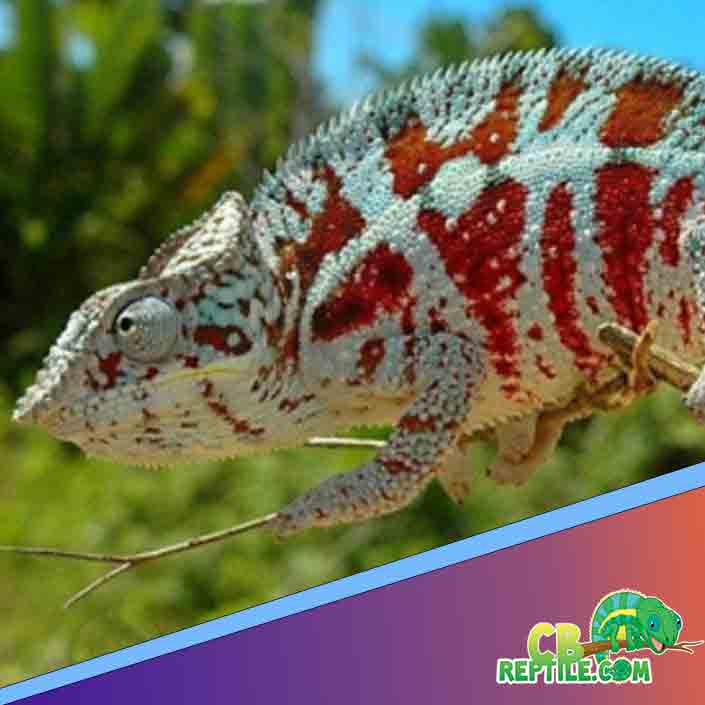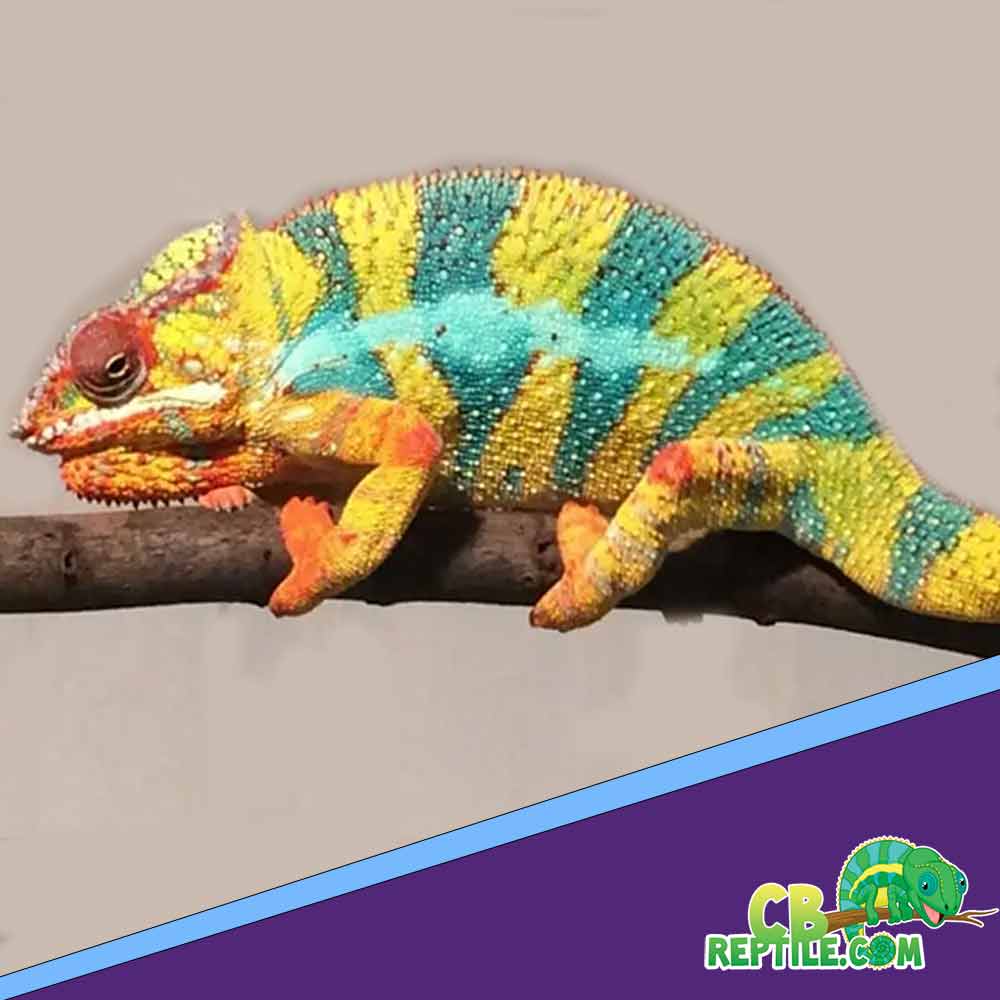Nosy Faly Panther Chameleon Locale Guide
The Nosy Faly panther chameleon locale is one of the most visually distinct and easily recognizable locales in the entire species, celebrated for its icy blues, white lateral patterns, and deep facial accents. Nosy Faly panther chameleons often appear as if dipped in cool ocean water, with striking bars, white speckling, and crisp contrast that sets them apart from the softer Cap Est pastels or the fiery Sambava reds.
For keepers searching for a truly unique, cool-toned locale, the Nosy Faly stands out as a centerpiece animal. Selecting a captive-bred juvenile from the best panther chameleon breeder ensures strong genetics, proper early care, and clear locale purity—important factors given the rarity of the Nosy Faly bloodlines and the high demand among collectors.

Where the Nosy Faly Locale Comes From
Nosy Faly is a small island located off the northwest coast of Madagascar, not far from the Nosy Be region. However, despite geographic proximity, Nosy Faly coloration differs significantly from Nosy Be’s more uniform blues. The Nosy Faly locale tends to exhibit crisper contrast, stronger whites, and a layered look that seems almost sculpted.
This island environment includes coastal forest, dense shrub zones, and humid pockets of vegetation that support canopy-dwelling reptiles. Over generations, isolation led to unique genetic traits such as high white highlights and more dramatic lateral striping.
Classic Nosy Faly Color Traits
Nosy Faly coloration is extraordinary and instantly recognizable. While individuals vary, most share the following signature traits:
- Icy blue body tones: Often lighter and more crystalline than deeper Nosy Be blues.
- White lateral bars or speckling: A defining feature that gives Nosy Faly chameleons a frosted look.
- Dark facial mask: Many display dark navy or blackish marking around the face when fired up.
- High contrast barring: Crisp bars ranging from light blue to deep navy.
- Occasional orange accents: Some bloodlines show subtle warm tones around the face or dorsal crest.
While most locales feature warm tones (Ambilobe) or medium contrast (Tamatave), the Nosy Faly is known for its sharp, sculpted, cold-toned appearance. This makes it a favorite for display enclosures designed to showcase color under bright lighting.

How Nosy Faly Differs From Nosy Be
The inevitable comparison for any Nosy Faly is with the Nosy Be locale, since both come from northern island regions. But while Nosy Be animals are often uniform blue or turquoise, Nosy Faly coloration is more patterned and high-contrast.
- Nosy Be: Smooth, rich blues with even coloration.
- Nosy Faly: Sharper blues with white, navy, and sometimes black accents.
- Nosy Be: More gradient-based coloration.
- Nosy Faly: Frosted, sculpted appearance with bright highlights.
This unique combination of cold blue and stark white makes Nosy Faly a premium choice among collectors looking for a chameleon that feels truly “ice themed.”
Temperament & Behavior
Nosy Faly panther chameleons vary in personality like all locales, but many keepers describe them as alert, intelligent, and moderately bold. They tend to be very responsive to movement and may display intense coloration quickly when stimulated.
Captive-bred Nosy Faly juveniles raised under stable conditions adapt well to captive environments, especially when they receive proper hydration cycles, UVB exposure, and plant-dense enclosures with vertical climbing space.
Enclosure Setup for Nosy Faly Panthers
Nosy Faly panther chameleons require the same basic setup as other locales, but the goal for most owners is to highlight their cool-toned coloration. For this reason, bright LED plant lighting combined with strong UVB helps the icy blue and white tones appear more vivid.
Ideal enclosure standards include:
- 24” x 24” x 48” or larger for adults.
- T5 HO 5.0 or 6% UVB spanning at least half of the cage width.
- Daytime heat gradient with a basking zone of 88–93°F.
- Nighttime temperature drop into the low 70s or upper 60s.
- Live plants like pothos, schefflera, or ficus.
Strong ventilation is essential for preventing respiratory issues, especially in humid climates. Screen-sided enclosures or hybrid builds with vented panels are perfect for Nosy Faly setups.

Diet & Hydration
Nosy Faly chameleons thrive on a varied insect diet that includes crickets, roaches, BSFL, silkworms, hornworms, and other well-gut-loaded feeders. Supplementation should include calcium without D3 for most feedings and a multivitamin on a rotating schedule.
Hydration is best provided through automated misting systems and nighttime fogging cycles that simulate natural dew formation. Like all panther chameleons, Nosy Faly individuals drink droplets from leaves rather than standing water bowls.
How to Identify a True Nosy Faly
Because the coloration of Nosy Faly lines can overlap with some Nosy Be and Ankify animals, accurate locale labeling is essential. Only purchase from breeders who clearly identify animals as “locale-pure Nosy Faly” and provide lineage photos when available.
Look for:
- Strong white lateral lines or speckling.
- Icy blue base coloration.
- Dark navy facial mask (common in adult males).
- High-contrast barring even when relaxed.
When browsing a reputable selection of chameleon for sale listings, check for clear photos of the sire and dam—especially important for rare locales like Nosy Faly.
Why Breeder Choice Matters
The Nosy Faly locale is one of the most misidentified locales in the hobby because of its overlap with other cool-toned regions. Only breeders with long-term, documented, locale-pure lines can rel
